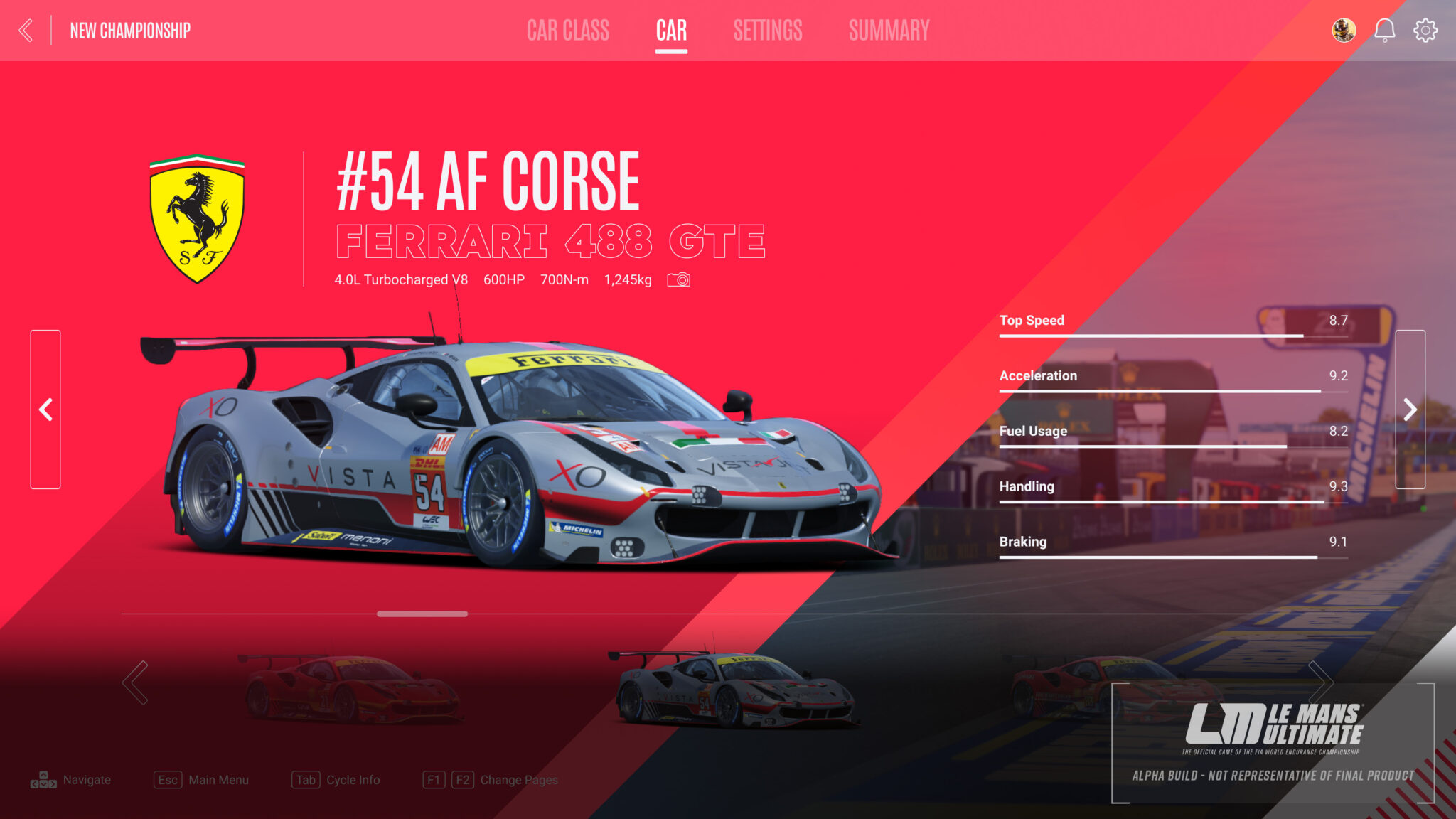Race Control. Online sim racing
Le Mans Ultimate sets out to redefine sim racing by offering an experience that’s true to the core of endurance racing. The UX challenge was to preserve the simulation’s depth while ensuring it’s approachable for players of all levels.
Client: Studio397 & Motorsport Games
Role: Lead UX
Focus: Leading design and front-end, UX design, UI design, UX research, stakeholder management, concept development, prototyping
Website: studio-397.com
Steam: rFactor 2
The official game of the fia world endurance championship
As the UX Lead, my role encompassed overseeing the design and functionality of the game interface, including the web portals and in-game services. My leadership extended to assembling and guiding a team of skilled UX designers, visual artists, and developers, ensuring that every aspect of the game was crafted to enhance user engagement.

The process that lead to Le Mans Ultimate.
In the development of “Le Mans Ultimate”, the design process I led was structured yet adaptable. I began with thorough research, gathering insights into sim racing best practices and competitor analysis. This formed the bedrock of our UX strategy, ensuring decisions were data-driven and user-focused.
The next phase involved hands-on experimentation with wireframes and prototypes, quickly moving ideas into tangible forms for evaluation and iteration. This was a team effort, with regular collaborative reviews to stay aligned and responsive to new information and feedback.
Refinement was continuous, sharpening the designs for development readiness and stakeholder presentation. We paid close attention to translating our vision into the game’s code, always circling back to validate that the final implementation matched our design intentions.
This approach was pragmatic, rooted in UX principles, and driven by the overarching goal of making sim racing accessible and enjoyable for a diverse gaming audience. As we approach launch, the journey of refinement continues, guided by player feedback and the anticipation of the game’s evolving future.

User-centric approach
In developing ‘Le Mans Ultimate”, the user-centric approach was critical. We listened closely to the sim racing community, using their insights to guide the design decisions. We aimed for an interface that was welcoming for novices, but rich for veteran players, with customizable settings for all skills levels. Regular feedback cycles, especially from team reviews and user testing, were integral to our process, ensuring that every design decision enhanced the players’ experience. This focus on the user will continue post-launch, as we plan to iterate and improve the game based on the community’s evolving feedback.



Final thoughts
Amidst critical resource and time constraints, my strategy focused on impactful design decisions. This meant prioritizing features and user experiences that would resonate most with our audience, informed by thorough research and the leveraging of insights from previous projects.
Initially launching on PC, we have a roadmap for continual refinement and updates, with console release being a prospect we are exploring. This strategic rollout underscores our commitment to long-term support and evolution of the game experience.
Display your work in a bold & confident manner. Sometimes it’s easy for your creativity to stand out from the crowd.
Where to find us
17 John St, NY 10038, USA
New York 20020
Phone: 657/4872-51475
lekker@qodeinteractive.com